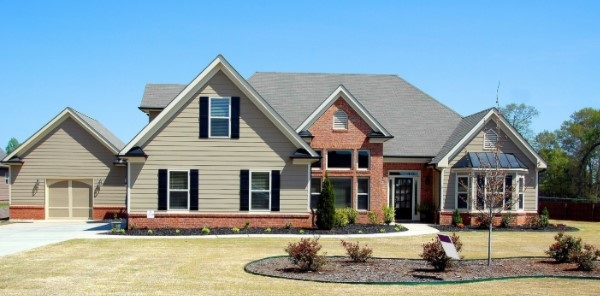Existing-home sales continued to climb in August, marking three consecutive months of positive sales gains, according to the National Association of Realtors. Total inventory saw a drop from July to August driven by lumber shortages caused by the California wildfires.
Each of the four major regions experienced both month-over-month and year-over-year growth, with the Northeast seeing the greatest improvement from the prior month. Year-over-year prices also saw a dramatic increase.
Total
existing-home sales, completed transactions that include single-family homes, townhomes, condominiums and co-ops, rose 2.4% from July to a seasonally-adjusted annual rate of 6.00 million in August. Sales as a whole rose year-over-year, up 10.5% from a year ago (5.43 million in August 2019).
“Home sales continue to amaze, and there are plenty of buyers in the pipeline ready to enter the market,” said Lawrence Yun, the Realtors’ chief economist. “Further gains in sales are likely for the remainder of the year, with mortgage rates hovering around 3% and with continued job recovery.”
“The August increase in existing-home sales was further confirmation of the housing market’s V-shaped recovery and overall strength in demand. The annualized pace of sales hit the 6-million mark for the first time since 2006, as transactions delayed by the pandemic continued to catch up. August was the second consecutive month of strong year-over-year sales gains, which is noteworthy considering the declines from April through June, and sales being down 31% in May. Last month’s strong sales activity was consistent with MBA’s purchase applications data, which has risen annually for four straight months," said Joel Kan, Mortgage Bankers Association assistant vice president of economic and industry forecasting.
The median existing-home price for all housing types in August was $310,600, up 11.4% from August 2019 ($278,800), as prices rose in every region. August’s national price increase marks 102 straight months of year-over-year gains.
Total housing inventory at the end of August totaled 1.49 million units, down 0.7% from July and down 18.6% from one year ago (1.83 million). Unsold inventory sits at a 3.0-month supply at the current sales pace, down from 3.1 months in July and down from the 4.0-month figure recorded in August 2019.
Scarce inventory has been problematic for the past few years, according to Yun, an issue he says has worsened in the past month due to the dramatic surge in lumber prices and the dearth of lumber resulting from California wildfires.
“Over recent months, we have seen lumber prices surge dramatically,” Yun said. “This has already led to an increase in the cost of multifamily housing and an even higher increase for single-family homes.”
Kan, from the MBA, shared similar sentiments. “It is concerning that housing inventory continued to decline last month and was over 18% lower than in 2019. This lack of supply continues to push home-price growth higher. The 11% gain in prices is far above income growth and threatens overall affordability – especially for first-time buyers. Homebuilders continue to face constraints, including higher production costs. However, it’s clear that more inventory is needed to keep home prices from rising too quickly,” he said.
Yun says the need for housing will grow even further, especially in areas that are attractive to those who can work from home. As highlighted in NAR’s August study, the 2020 Work From Home Counties report, remote work opportunities are likely to become a growing part of the nation’s workforce culture. Yun believes this reality will endure, even after a coronavirus vaccine is available.
“Housing demand is robust but supply is not, and this imbalance will inevitably harm affordability and hinder ownership opportunities,” he said. “To assure broad gains in homeownership, more new homes need to be constructed.”
Properties typically remained on the market for 22 days in August, seasonally equal to the number of days in July and down from 31 days in August 2019. Sixty-nine percent of homes sold in August 2020 were on the market for less than a month.
First-time buyers were responsible for 33% of sales in August, down from 34% in July 2020, but up from 31% in August 2019. NAR’s 2019 Profile of Home Buyers and Sellers – released in late 2019[4] – revealed that the annual share of first-time buyers was 33%.
Individual investors or second-home buyers, who account for many cash sales, purchased 14% of homes in August, a small change from July’s figure of 15% and equal to the August 2019 rate of 14%. All-cash sales accounted for 18% of transactions in August, up from 16% in July 2020 and down from 19% in August 2019.
Distressed sales – foreclosures and short sales – represented less than 1% of sales in August, equal to July’s percentage, but down from 2% in August 2019.
“The past few months have shown how valuable real estate is in the country, both to our nation’s economy and to individuals who have been given an opportunity to rethink their location and redesign their lifestyle,” said Vince Malta, president of the Realtors association.
According to Freddie Mac, the average commitment rate for a 30-year, conventional, fixed-rate mortgage decreased to 2.94% in August, down from 3.02% in July. The average commitment rate across all of 2019 was 3.94%.
Single-family and Condo/Co-op Sales
- Single-family home sales sat at a seasonally-adjusted annual rate of 5.37 million in August, up 1.7% from 5.28 million in July, and up 11.0% from one year ago. The median existing single-family home price was $315,000 in August, up 11.7% from August 2019.
- Existing condominium and co-op sales were recorded at a seasonally adjusted annual rate of 630,000 units in August, up 8.6% from July and up 6.8% from one year ago. The median existing condo price was $273,300 in August, an increase of 7.8% from a year ago.
Regional Breakdown
- For three straight months, home sales have climbed in every region compared to the previous month. Median home prices grew at double-digit rates in each of the four major regions from one year ago.
- August 2020 saw existing-home sales in the Northeast jump 13.8%, recording an annual rate of 740,000, a 5.7% increase from a year ago. The median price in the Northeast was $349,500, up 10.4% from August 2019.
- Existing-home sales increased 1.4% in the Midwest to an annual rate of 1,410,000 in August, up 9.3% from a year ago. The median price in the Midwest was $246,300, a 10.7% increase from August 2019.
- Existing-home sales in the South rose 0.8% to an annual rate of 2.60 million in August, up 13.0% from the same time one year ago. The median price in the South was $269,200, a 12.3% increase from a year ago.
- Existing-home sales in the West inched up 0.8% to an annual rate of 1,250,000 in August, a 9.6% increase from a year ago. The median price in the West was $456,100, up 11.8% from August 2019.

